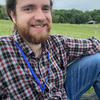Our Mission
The Hope Center for Student Basic Needs at the Lewis Katz School of Medicine at Temple University is an action-oriented research, policy, and capacity-building center, removing barriers to college student success and well-being through:
Research: investigating students’ lived experiences with basic needs insecurity and evaluating interventions
Policy: informing and advocating for systemic policy change to make college more affordable and secure college students' basic needs
Practice: collaborative coaching with colleges, universities, and states on meeting students’ basic needs through systems transformation
Our Vision
We are researchers, scholars, advocates, conveners, and storytellers who envision a world where basic needs insecurity is no longer a barrier to pursuing and completing college. We take a systems-change approach to creating a higher education landscape where educational opportunity is universal and equitable.
Our Context
We collaborate, convene, investigate, and advocate within systems shaped by historical and ongoing inequities. These disparities are the result of intentional choices that have concentrated power and resources in ways that disadvantage many students and their families. Our work is rooted in recognizing, challenging, and reimagining these structures to create a more just and inclusive future.
We work to improve the lives of students in higher education by increasing college affordability and accessibility and transforming educational systems as part of a broader effort to improve our collective well-being. Advancing equity, health, and opportunity in higher education requires repairing harm in community. We are proud to stand alongside those working to make this vision a reality.
Our Theory of Change


















